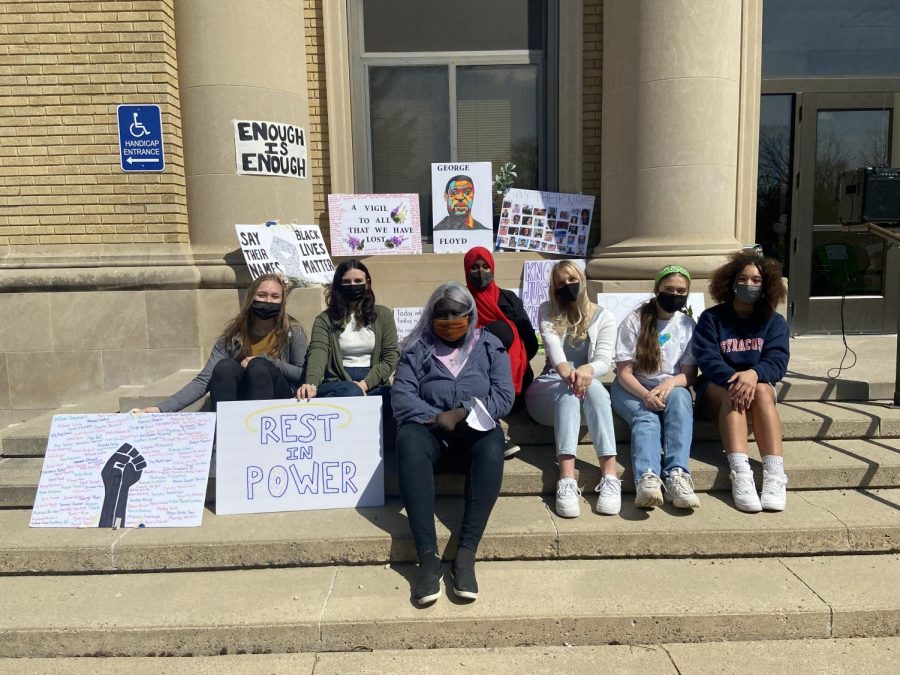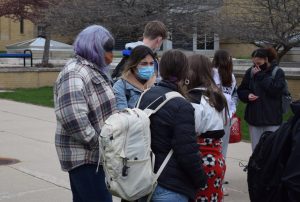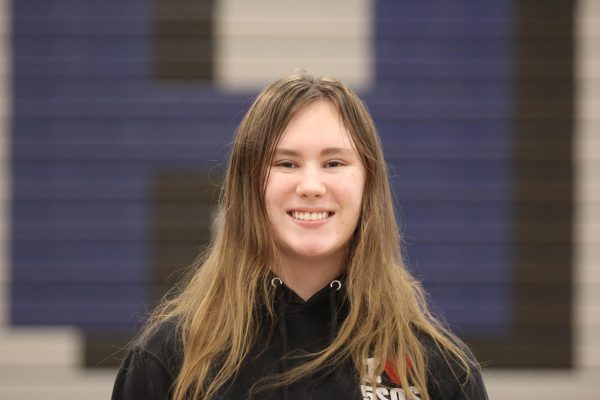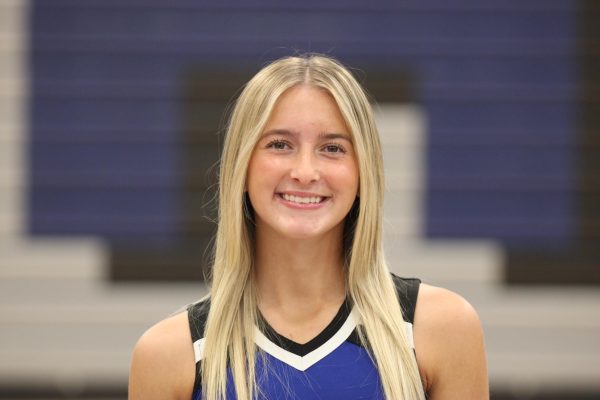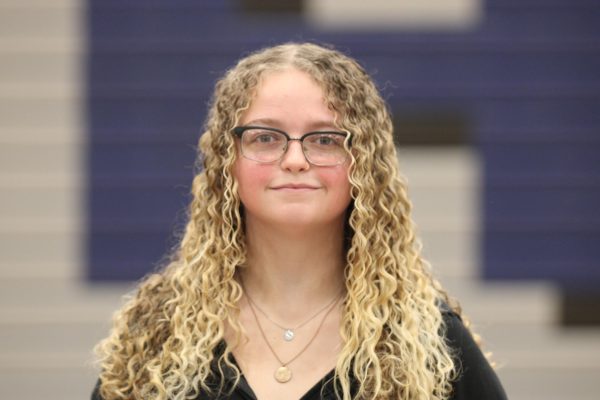OHS impacted by the trial of Derek Chauvin
This was a student-organized vigil held at OHS after the verdict. Vigil Organizers: Sydney Hunst, Maddie Moen, Wilo Omot, Fardouza Farah, Jenna Dallenbach, Sabella Mass, and Janessa Moore gather together after the vigil
April 24, 2021
The Trial
All eyes have been on Minneapolis since the trial of former Minneapolis police officer Derek Chauvin began on March 8. Chauvin was charged with unintentional second-degree murder, third-degree murder, and second-degree manslaughter in the death of George Floyd last May. The charges are to be considered separate, so the possibility was that Chauvin could have been convicted of all, some, or none of them. Chauvin, who pleaded not guilty, was charged four days after video evidence of him kneeling on Floyd’s neck for over nine minutes during an arrest on May 25.
The trial lasted three weeks, as the defense called in seven witnesses and 38 prosecution members. The first week, the prosecution called witnesses who had seen the arrest to the stand, including 18-year-old Darnella Frazier who recorded the arrest. The New York Times said, “Frazier was 17 when she took a video of the arrest that helped prompt a wave of protests across the country… On May 25, she arrived at the Cup Foods convenience store with her 9-year-old cousin. ‘It seemed like he knew it was over for him,’ she said of Mr. Floyd. ‘He was terrified.’ ”
In the second week, according to The New York Times, the defense and prosecution focused on these three questions: “Whether Mr. Chauvin violated policy when he knelt on George Floyd’s neck for nine and a half minutes; what role, if any, drugs played in Mr. Floyd’s death; and what kind of impact the arrest may have had on the people who witnessed it.”
The defense, led by Eric J. Nelson, argued that Floyd died of an enlarged heart, the drugs fentanyl and methamphetamine in his system, and possibly carbon monoxide from squad car exhaust. The defense called seven witnesses over two days. One of the seven witnesses the defense called in was their own medical expert Dr.David Fowler, the former chief medical examiner for the State of Maryland. As reported by NPR, Dr.Fowler testified that he, “Saw no evidence that Mr. Chauvin’s knee hurt Mr. Floyd in any way.”
Dr. Flower also deduced that Floyd’s death should be listed as undetermined rather than a homicide. According to Fox News, “Fowler concluded Floyd’s manner of death should be listed as undetermined rather than homicide because of all the factors at play, including possibly carbon monoxide from squad car Floyd was being held on the ground next to. Fowler made clear he does not believe carbon monoxide did not kill Floyd, but it was a contributing factor in his death along with heart disease, underlying health conditions, and drug use.”
One of the 33 prosecution witnesses called to the stand was the current Hennepin County Medical Examiner, Dr. Andrew Baker. Dr. Baker testified for the prosecution that Floyd died of cardiopulmonary arrest due to the law enforcement subdural restraint and the neck compressions.
According to The Associated Press Baker said, “Floyd’s heart gave out because of the pressure on his neck. He said Floyd’s heart problems combined with the way police held him down and compressed his neck, ‘was just more than Mr. Floyd could take.’ Though Baker did not rule asphyxiation as a cause of Floyd’s death, at one point he testified that he isn’t an expert on breathing and would defer certain questions to those who are.”
According to The New York Times, pulmonologist and critical care physician from Chicago, Dr. Martin J. Tobin testified he saw no evidence that Floyd died of a drug overdose and said any person could have died after being pinned down under Chauvin’s knee for over nine minutes. Minneapolis Police Department Chief Medaria Arradondo and other members of the department testified that Chauvin’s lengthy restraint of Floyd was not reasonable and violated the department’s policies on the use of force.
The trial began closing arguments on Monday, April 19, after Chauvin said he would not be testifying, invoking his fifth amendment right to do so. During his closing statement for the defense, Nelson argued that there was much more to the case than what has been recorded on a cellphone video. He also argued that there was at least reasonable doubt about whether Chauvin’s actions were allowed under Minneapolis Police Department policies and whether Chauvin had caused Floyd’s death.
The prosecution closed by arguing that there is no reasonable doubt and that the jury can believe what they’ve seen on video and in the testimonies. Prosecutor Steve Scheicher, as reported by the Washington Post, said, “This case is exactly what you thought when you saw it first. It’s exactly what you saw with your eyes. … This wasn’t policing. This was murder.”
The Verdict
The world was waiting as the jury went into deliberation on Monday, April 19. According to CNN, Judge Peter Cahill said, “Basically, it’s up to the jury how long you deliberate, how long you need to come to a unanimous decision on any count.” The jury deliberated for over 10 hours over two days. On Tuesday, April 20 the jury came to the verdict. They found Chauvin guilty of all three charges: second-degree unintentional murder, third-degree murder, and second-degree manslaughter. Chauvin could face up to 40 years in prison and is scheduled to be sentenced in several weeks.
Now that the verdict is in, Judge Cahill’s next step is sentencing. According to CNN, the second-degree unintentional murder charge claims Chauvin caused Floyd’s death without intent. The third-degree murder charge claims Chauvin caused Floyd’s death by, “Perpetrating an act eminently dangerous to others and evincing a depraved mind, without regard for human life.” The second-degree manslaughter charge alleged Chauvin caused Floyd’s death by, “Culpable negligence whereby the person creates an unreasonable risk, and consciously takes chances of causing death or great bodily harm.”
About a dozen of Floyd’s family members gathered downtown as they teared up and embraced each other, relieved by the end of the trial. Floyd’s family is finally able to take a breath after civil rights attorney Ben Crump, who represents Floyd’s family, said in a statement on Twitter, “Painfully earned justice has finally arrived.” He called the verdict, “turning point in history” that “sends a clear message on the need for accountability of law enforcement.” Philonise Floyd, George Floyd’s brother, was seen praying in the courtroom, and when asked by a reporter what he had been praying for he said, “I was just praying they would find him guilty. As an African American, we usually never get justice.”
Local Impact
On Monday, April 19, OHS students joined together to participate in a statewide walkout in solidarity against racial injustice. Students gathered outside with signs and discussed the recent death of Dante Wright and the deaths of countless others. The group held a moment of silence and returned to class.
Students of all grade levels participated, including senior organizer Wilo Omot. Omot followed the trial and said, “My initial reaction was relief because the trials shouldn’t have been pushed back this far. It’s not only justice but accountability.”
On Thursday, April 22, OHS students also held a vigil for George Floyd and other Black lives lost at the hands of police brutality right after school. One of the organizers senior Sabella Maas said, “It started with the walkout that we had, we realized it wasn’t our most successful event to get students involved, so we decided to plan something else. We then came up with the idea of the vigil depending on the outcome of the trial.”
While the OHS administration supports the event, the event was student-organized and OHS is not directly involved. Organizers encouraged students to be there to show their respect and mourn the loss of Black lives the community and nation has lost. There were approximately 60 people in attendance. Senior Nataly Hurtado, who has been following the trial closely, attended the vigil on Thursday. When asked about her reaction to the guilty verdict and the vigil she said, “When I saw the jury’s verdict, I was glad that Chauvin was held responsible for his actions. I’ve seen the hurt within this community and Minnesota.”


